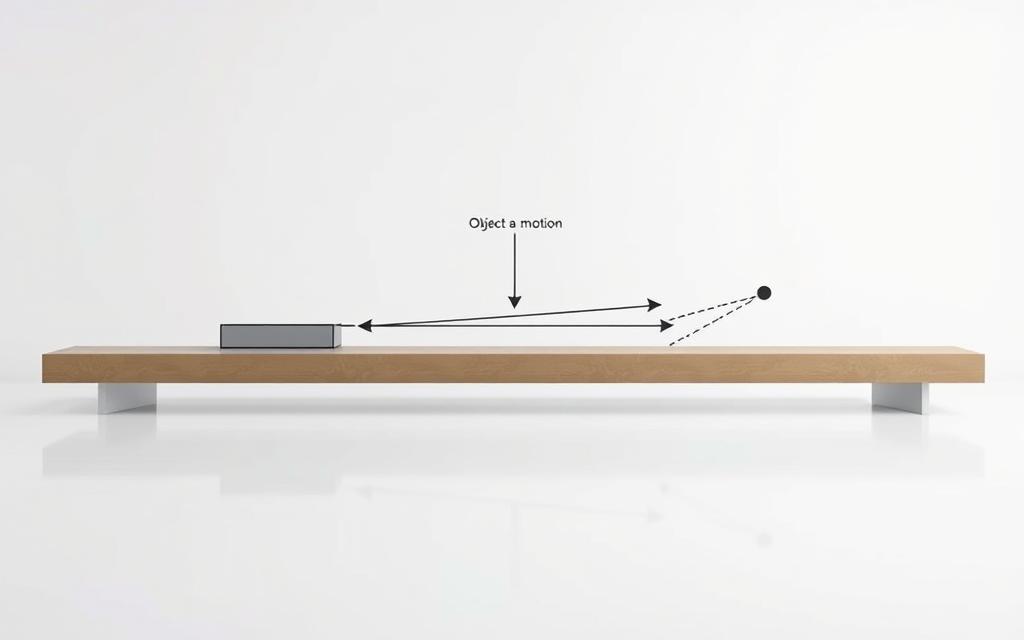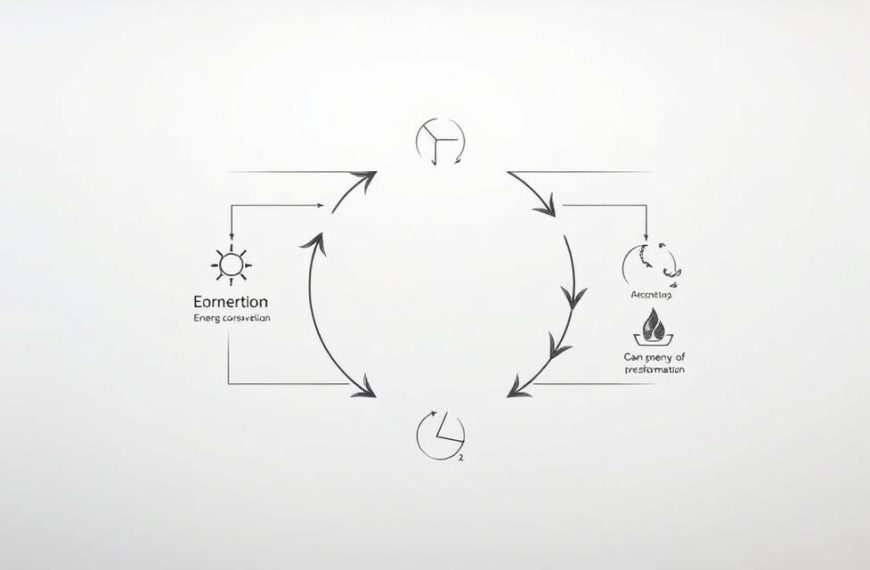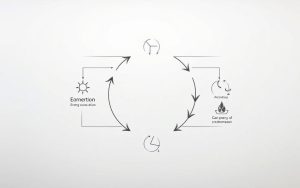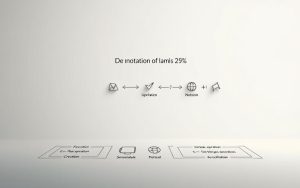Sir Isaac Newton revolutionised physics in the 17th century with three foundational principles. Among these, the law describing natural resistance to movement changes remains vital for understanding everyday phenomena. This principle explains why a coffee cup stays put on your desk – and why vehicles require constant force to maintain speed.
At its core, the concept states that bodies maintain their current state of rest or uniform motion unless influenced by external forces. This inherent tendency to resist acceleration or deceleration is called inertia. Massive objects exhibit stronger resistance, making this behaviour particularly noticeable in heavy machinery or transport systems.
Engineers leverage this knowledge when designing safety features in cars or stabilising satellites in orbit. From playground swings to intercity trains, the principle governs motion across scales. Its historical significance lies in challenging earlier beliefs that continuous force was needed to sustain movement.
Understanding this fundamental rule provides insight into phenomena like seatbelt effectiveness or spacecraft trajectories. Modern applications extend to robotics and renewable energy systems, proving its enduring relevance in technological advancements.
Exploring what is newton’s first law
At the heart of classical mechanics lies a principle governing motion’s persistence. This fundamental rule explains why stationary items resist movement spontaneously – and why moving ones maintain their trajectory without interference.
Definition and Core Concepts
The principle states: “A physical body maintains its current condition – whether stationary or moving uniformly – until external influences alter that state.” Two critical scenarios emerge:
| State | Condition | Required Action |
|---|---|---|
| Rest | Stationary position | Applied force to initiate movement |
| Uniform Motion | Constant speed/direction | External influence to alter velocity |
Understanding the Law of Inertia
This resistance to change, termed inertia, varies with mass. As noted in established physics literature, “Every body perseveres in its state of rest… unless compelled by impressed forces.”
“Inertia isn’t just resistance – it’s nature’s preference for maintaining equilibrium.”
Common misunderstandings arise when observing slowing vehicles or stopping pendulums. These changes actually demonstrate opposing forces like friction or air resistance at work, not the absence of natural motion persistence.
The Principle of Inertia
Everyday experiences reveal a fundamental truth about physical behaviour: matter resists sudden changes. This resistance forms the basis of inertia, a property determining how objects interact with forces. From luggage sliding in car boots to satellites maintaining orbits, this principle operates universally.

Inertia Explained
Inertia quantifies an object’s reluctance to alter its state motion. Measured through mass (in kilograms), it explains why pushing a bicycle requires less effort than moving a lorry. As outlined in established physics resources, this fundamental property of matter dictates that:
- Stationary items stay immobile without applied force
- Moving objects maintain velocity unless impeded
Heavier masses exhibit greater resistance – a concept crucial for engineers designing braking systems or stabilising spacecraft trajectories.
Real-World Demonstrations of Inertia
Practical examples make this abstract concept tangible. Consider these scenarios:
- A tablecloth pulled swiftly leaves dishes undisturbed (high mass resists movement)
- Passengers lurch forward when buses brake abruptly (bodies maintain original motion)
- Planets orbit stars without propulsion (cosmic inertia balances gravitational force)
These demonstrations clarify why safety harnesses counteract inertia during collisions. They also underscore its role in natural phenomena – from pendulum swings to asteroid paths.
External Forces and Their Impact
Understanding motion requires analysing the push and pull of external influences. These forces acting on objects determine whether they maintain velocity or alter course. Crucially, they originate outside the system being observed – a key distinction from internal interactions.
What Constitutes an External Force
An external force changes an object’s mechanical energy through kinetic or potential adjustments. Common examples include:
- Friction between surfaces
- Air resistance during movement
- Gravitational pull from Earth
The combined effect of multiple forces creates net force – their vector sum determines motion changes. When balanced (zero net force), objects maintain constant velocity. Unbalanced forces cause acceleration, as shown below:
| Force Type | Direction | Result |
|---|---|---|
| Equal opposing forces | Opposite | No acceleration |
| Unbalanced force | Single direction | Velocity change |
Examples: Friction, Air Resistance and More
Consider a football rolling across grass. Three external forces act simultaneously:
- Gravity pulling downward
- Normal force pushing upward
- Friction opposing motion
Air resistance becomes significant at higher speeds, explaining why cyclists crouch to reduce drag. Engineers prioritise these factors when designing vehicles, using aerodynamic shapes to minimise opposing forces acting against movement.
“Net force calculations separate predictable motion from chaotic interactions.”
Illustrative Examples from Daily Life
From morning commutes to household chores, invisible forces shape our daily routines. These scenarios demonstrate how resistance to movement changes governs both mundane and critical situations.

Seat Belts and Vehicle Safety
Car journeys provide clear examples of inertia at work. When vehicles brake abruptly, passengers’ bodies maintain their original object motion – a principle addressed by seat belts. The restraint system applies necessary force to counteract this natural tendency, preventing dangerous forward movement.
Loose items in cars reveal similar behaviour. Unsecured bags slide forwards during deceleration and backwards when accelerating. This occurs because objects persist in their state until external influences intervene – precisely as described by Newton first law.
Practical Demonstrations Using Everyday Objects
Household items offer simple ways to observe this principle. A book remains at object rest on a table unless acted upon by hands or vibrations. Pour water into a moving trolley, and the liquid maintains its level despite container motion – another example of natural resistance.
Sports activities further illustrate the concept:
- Ice hockey pucks glide farther than footballs due to reduced friction
- Sprinters push backwards forcefully to overcome initial inertia
- Cyclists lean into turns to maintain balance against directional changes
Public transport scenarios complete the picture. Standing bus passengers sway backwards during acceleration and forwards when stopping – visible proof that object motion continues unless acted upon by external forces like handrails or brakes.
Comparing Newton’s Laws of Motion
Three interconnected principles govern how objects interact with forces in our universe. While each addresses distinct scenarios, they collectively form a framework predicting motion across terrestrial and cosmic scales.
Contrasting the First Law with the Second and Third Laws
The second law motion builds upon its predecessor mathematically. Where the first principle describes equilibrium (Fnet=0), the second law quantifies acceleration through F=ma. This relationship means:
- Stationary objects under balanced forces demonstrate the first law
- Moving objects experiencing acceleration obey the newton second law
Consider a shopping trolley. It remains stationary until pushed (first law), accelerates proportionally to applied force (second law), and exerts backward force on the pusher’s hands (third law motion). This interdependence appears in complex systems like:
| System | First Law | Second Law | Third Law |
|---|---|---|---|
| Rocket launch | Liftoff resistance | Thrust calculation | Exhaust interaction |
| Elevator mechanics | Static cables | Acceleration forces | Counterweight push |
The newton third law introduces reciprocal forces between interacting bodies. While the first two laws focus on single objects, this principle explains why actions never occur in isolation. A sprinter’s foot applies force to the track (action), while the track propels the runner forward (reaction).
“These laws form a triangular foundation – remove one, and our understanding of motion collapses.”
Engineers prioritise these relationships when designing collision-absorption systems. Crumple zones in vehicles demonstrate all three principles: maintaining passenger inertia (first), managing deceleration forces (second), and redistributing impact energy (third).
Mathematical Perspectives and Conceptual Models
Quantitative analysis reveals the precision behind motion principles. By translating observations into equations, we gain predictive power over physical behaviour. This mathematical lens clarifies why objects maintain their states under specific conditions.
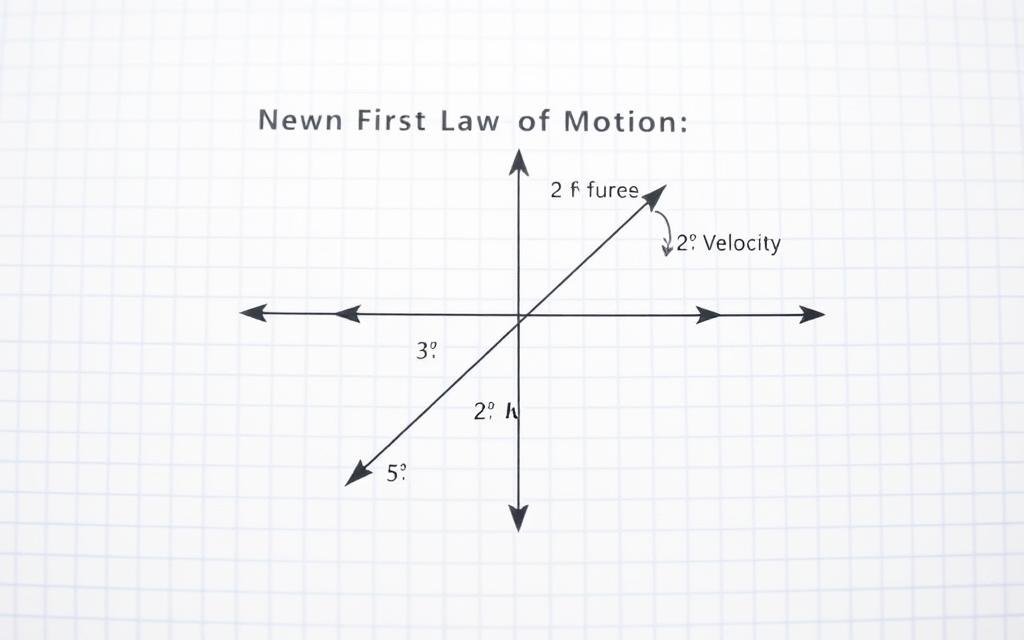
Net Force and Constant Velocity
The relationship Fnet = ma underpins motion analysis. When net force equals zero, acceleration vanishes – a cornerstone of the discussed principle. Two distinct scenarios emerge:
| Condition | Velocity | Acceleration |
|---|---|---|
| Stationary object | v = 0 | a = 0 |
| Moving object | v ≠ 0 | a = 0 |
In both cases, direction and magnitude remain unchanged. A train maintaining 100 mph along a straight line exemplifies this – wheels balance friction while tracks negate lateral change.
Forces behave as vectors, requiring consideration of both strength and orientation. Multiple influences – like gravitational pull and air resistance – often cancel out. When their sum equals zero, velocity persists unaltered. This explains why satellites orbit without propulsion: celestial forces achieve equilibrium.
“Mathematics transforms philosophical concepts into engineering blueprints.”
Reference frames prove critical. Observations only hold true in inertial systems – those moving at constant velocity. Accelerating perspectives falsely suggest spontaneous change, highlighting the law’s dependence on stable measurement contexts.
Applications in Engineering and Modern Technology
Modern engineering feats rely heavily on understanding resistance to movement changes. From urban transport networks to interplanetary probes, mechanical systems integrate principles of natural persistence into their designs. This approach ensures predictable behaviour across dynamic environments.
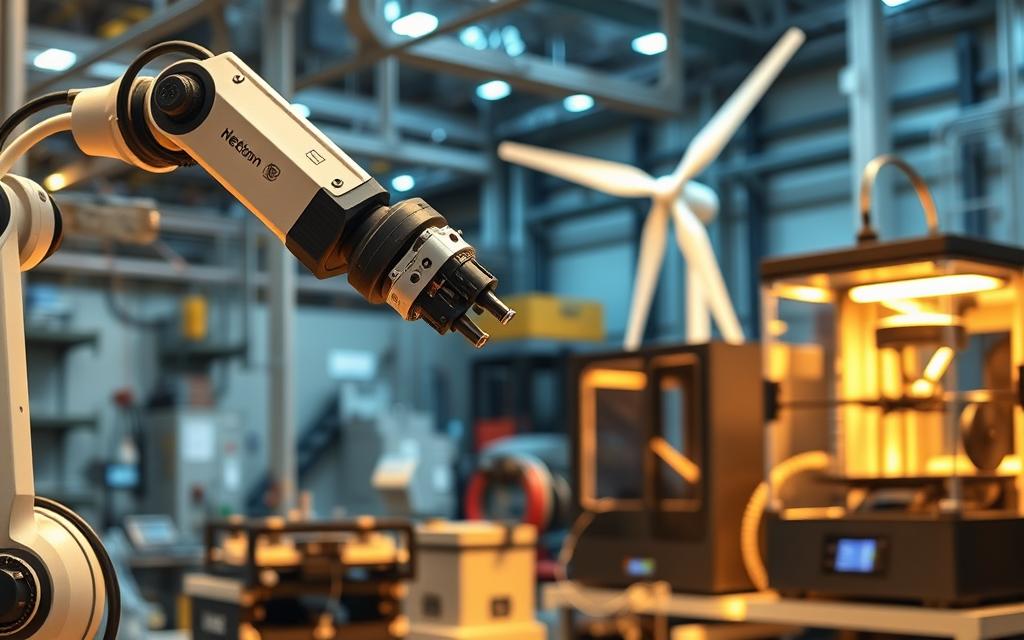
Design Considerations in Mechanics
Automotive engineers prioritise mass distribution when developing braking systems. Heavier vehicles require greater force to alter velocity, influencing component sizing and material choices. This calculation extends to:
| Application | Key Factor | Engineering Solution |
|---|---|---|
| Aircraft navigation | Air resistance | Streamlined fuselages |
| Ship stabilisation | Water drag | Hull curvature optimisation |
| Satellite orientation | Vacuum conditions | Thruster pulse sequences |
Manufacturing systems demonstrate similar principles. Conveyor belts maintain motion through precisely calculated motor torque, countering friction. Robotic arms account for acceleration limits to prevent overshooting targets during high-speed operations.
Safety innovations particularly showcase these concepts. Crumple zones manage collision energy by gradually altering direction of impact forces. Airbag deployment timings synchronise with passenger motion patterns during sudden deceleration.
“Mechanical design begins with respecting an object’s tendency to maintain its state – our job is to guide that tendency productively.”
Emerging technologies continue this legacy. Magnetic levitation trains eliminate wheel friction, while smartphone gyroscopes exploit inertia for orientation sensing. Each advancement confirms the enduring relevance of foundational physics in technological progress.
Historical Context and Sir Isaac Newton’s Legacy
The 17th century witnessed a seismic shift in scientific thought, catalysed by Sir Isaac Newton’s groundbreaking work. His Philosophiæ Naturalis Principia Mathematica (1687) dismantled medieval assumptions about motion, replacing them with mathematically rigorous principles. This text revolutionised how scholars perceived celestial and terrestrial mechanics alike.

Newton’s Contribution to Physics
Isaac Newton synthesised earlier discoveries by Galileo and Kepler into a unified framework. Where Aristotelian physics claimed objects naturally sought rest, Newton demonstrated that motion persists without intervention. His three laws motion provided predictive power previously unimaginable:
| Aspect | Pre-Newtonian Belief | Newtonian Principle |
|---|---|---|
| Object State | Rest as natural condition | Constant velocity without force |
| Mathematics | Qualitative descriptions | Quantitative equations (F=ma) |
| Cosmic Order | Separate earthly/celestial rules | Universal gravitation theory |
“Every body perseveres in its state… unless compelled to change by impressed forces.”
The Evolution of Classical Mechanics
Newton’s framework became the bedrock for engineering and physics. While Einstein’s relativity and quantum mechanics later expanded its scope, classical mechanics still governs:
- Structural engineering calculations
- Spacecraft trajectory planning
- Vehicle safety system designs
Galileo’s inertia concept and Kepler’s planetary observations found their full expression in Newton’s laws motion. This legacy endures in modern physics curricula and industrial standards worldwide.
Conclusion
Motion patterns reveal nature’s resistance to sudden change. The law inertia explains why objects maintain their state motion – whether parked cars or orbiting satellites – unless acted upon by sufficient force. This principle remains foundational in physics, shaping innovations from ergonomic furniture to Mars rover designs.
Mass object determines resistance levels – a concept engineers prioritise when creating earthquake-resistant structures. Daily scenarios like seatbelt tension during sudden stops demonstrate the first law’s practical value. Even celestial bodies follow these rules, maintaining orbital paths through balanced gravitational interactions.
Modern technology continues building upon this 17th-century insight. Magnetic levitation trains exploit inertia for frictionless travel, while robotic systems calculate precise force requirements. These applications confirm the enduring relevance of Newton first law in solving contemporary challenges.
From kitchen utensils to space exploration, understanding natural resistance to change unlocks safer, more efficient designs. This principle’s simplicity belies its power – a testament to foundational physics shaping our engineered world.

